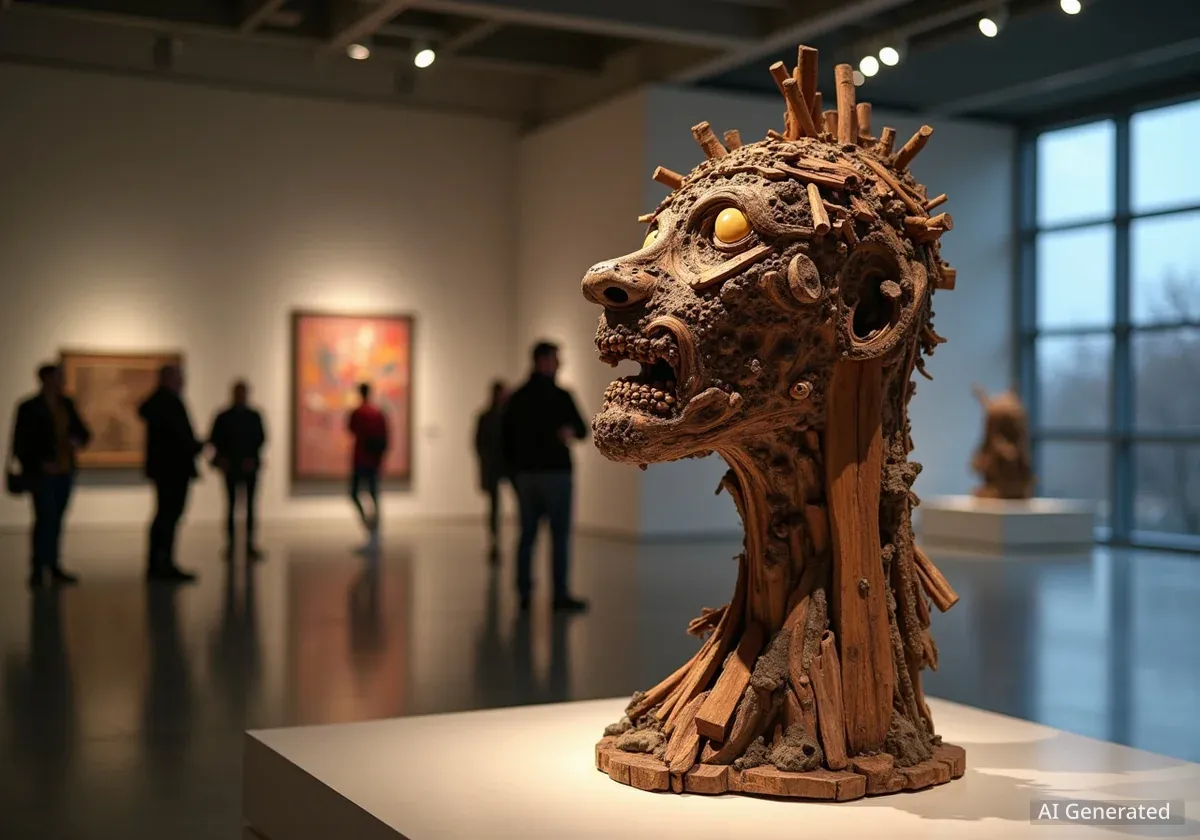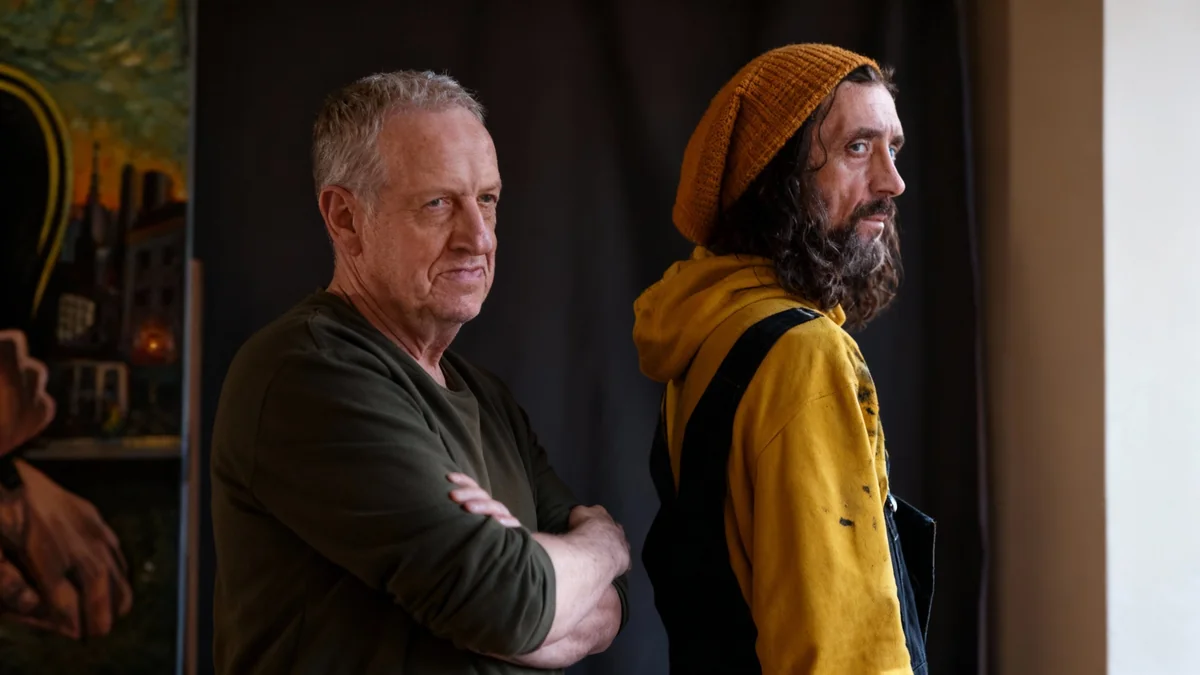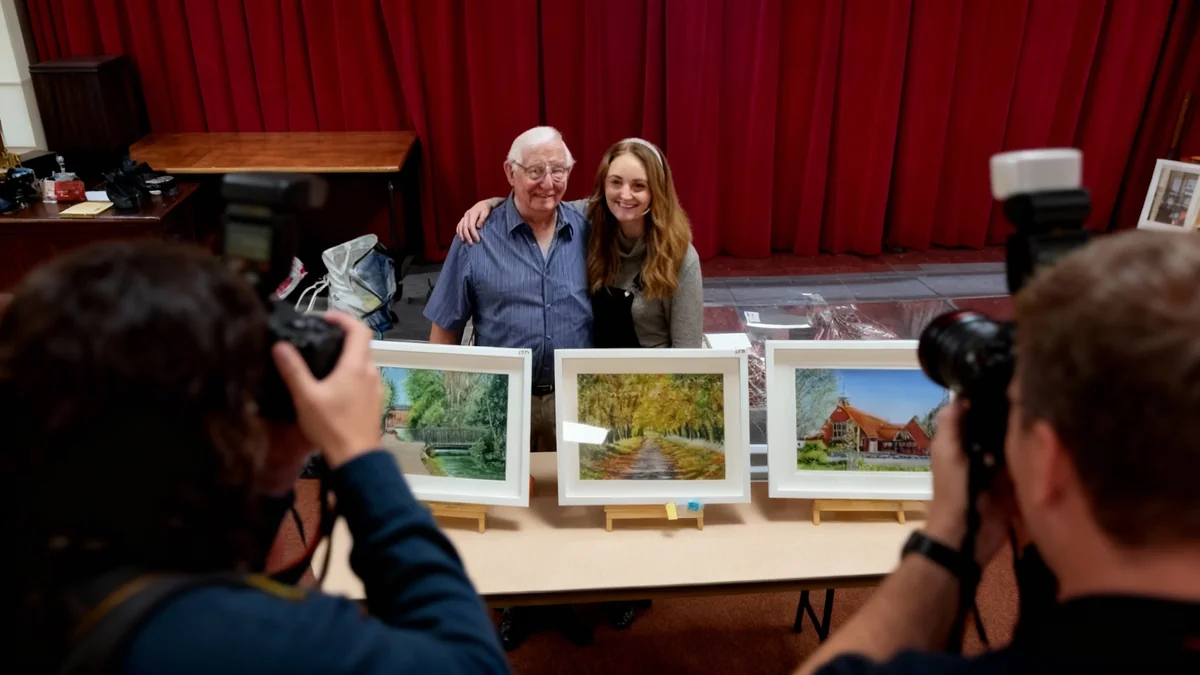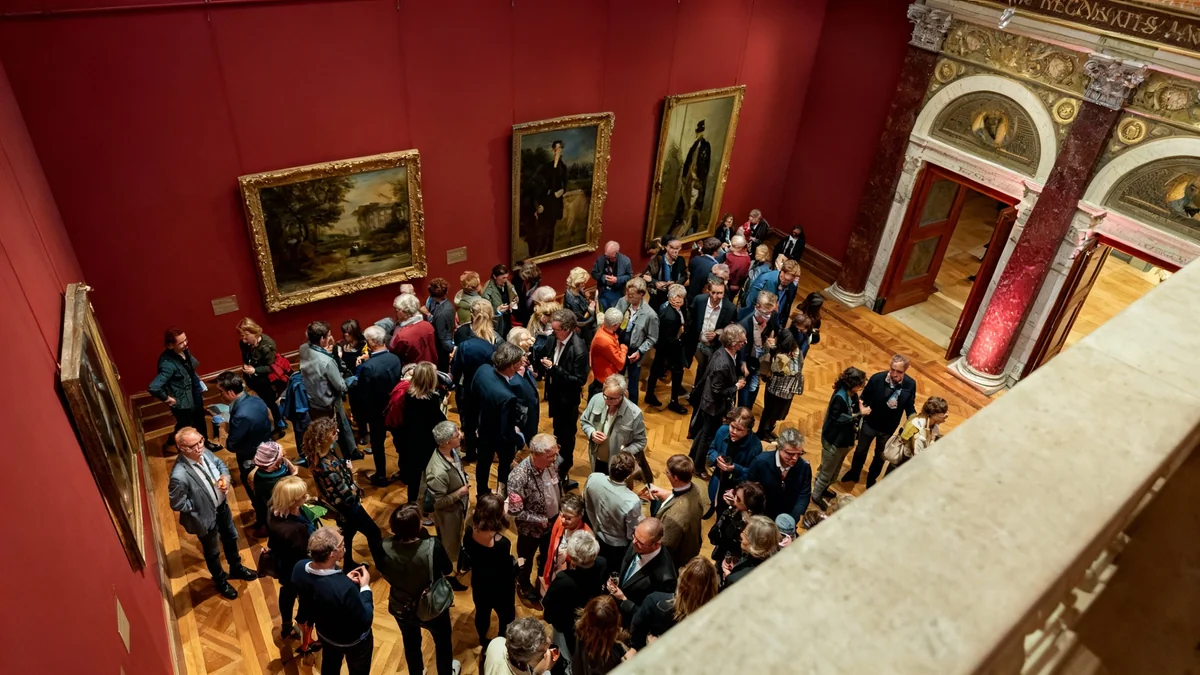Artist Theaster Gates, known for transforming discarded materials into significant artworks, is presenting his first solo museum exhibition in his hometown of Chicago. Titled “Unto Thee,” the exhibit opens at the Smart Museum of Art on the University of Chicago campus on September 23 and will run until February 22, 2026. This exhibition offers a deep look into Gates' unique practice, which blends art, urban development, and social commentary, reflecting on his two decades of work and his evolving relationship with the city.
The exhibition showcases several new works, including a large-scale installation of more than 2,500 orphaned books. Gates rebound these volumes in jet-black covers and inscribed each spine with a verse, forming a complete poem that reflects on his mother's passing. This approach highlights his consistent theme of giving new life and meaning to unwanted objects.
Key Takeaways
- “Unto Thee” is Theaster Gates' first solo museum exhibition in Chicago, running from September 23 to February 22, 2026, at the Smart Museum of Art.
- The exhibition features works created from discarded materials, including 2,500 rebound books that form a poetic tribute to his mother.
- Gates' practice extends beyond traditional art, encompassing urban redevelopment through his non-profit, Rebuild.
- The show explores themes of preservation, transformation, and the artist's evolving relationship with his art and his city.
- Public programming includes tours of his South Side properties, performances by The Black Monks, and discussions at the new Land School.
The Artist's Vision: From Discarded to Divine
Theaster Gates, 51, has established himself as a prominent figure in the art world since his self-financed debut show in 2007. His work often involves transforming overlooked items and spaces into powerful artistic statements. At the Smart Museum, Gates was recently involved in installing parts of the exhibition, meticulously arranging the hundreds of books that form a central piece.
Each book in the collection, originally from a defunct Cleveland store, has been given a new black cover. Gates then inscribed a verse on each spine. When arranged, these books collectively form a poem he wrote, which serves as a meditation on his mother's death over a decade ago. He envisions visitors reciting the words, turning the gallery into a space for collective reflection.
"I traffic in unwanted things," Gates stated, explaining his artistic philosophy. "What I like is that the duress creates urgency. It creates a logistical challenge. It creates a spatial opportunity. And all of those things are like the engine fuel that ignite a kind of new creative energy."
Interesting Fact
Theaster Gates has repurposed a wide range of discarded materials throughout his career, including old fire hoses, salvaged school desks, and entire boarded-up buildings, demonstrating his commitment to revitalization.
A Hometown Exhibition: A Turning Point for Gates
Despite his international acclaim, including major museum exhibitions in New York and Japan, "Unto Thee" marks Gates' first solo museum show in his native Chicago. This exhibition represents a significant moment for the artist, whom he describes as a "pivot" in what he needs daily for fulfillment. His practice goes beyond traditional art forms, deeply engaging with urban renewal and investment in Black communities within Chicago.
Gates grew up in East Garfield Park and attended Lane Tech High School. His mother, a teacher, hoped he would become a pastor or secure a city job. After studying pottery and urban planning at Iowa State, he worked as an arts planner for the Chicago Transit Authority under Valerie Jarrett. Gates often credits his understanding of policy and logistics as crucial to his success, describing it as a blend of "logistics and poetics."
Background Information
Theaster Gates' work often blurs the lines between art, urban planning, and community development. His approach involves not just creating art objects but also transforming entire neighborhoods and creating spaces for cultural engagement and preservation.
Rebuilding the South Side: Art as a Catalyst for Change
Gates' artistic practice includes acquiring vacant properties in Chicago's Grand Crossing neighborhood. He revitalizes these buildings, transforming them into community spaces for art, performance, and archival preservation. His non-profit organization, Rebuild, manages these holdings, aiming to create models of redevelopment and hope. This unique blend of art and urban intervention has become a hallmark of his career.
One notable project is the Stony Island Arts Bank. Gates acquired this neoclassical bank, which had been closed since the 1960s, for $1 from the city, on the condition he raise millions for its restoration. The Arts Bank now serves as an event space and gallery, housing significant archival collections, including the library of Ebony and Jet magazines and Frankie Knuckles' vinyl record collection.
- 6900 South Dorchester Avenue: Gates purchased his first property, a defunct candy store, in 2006.
- Stony Island Arts Bank: A neoclassical bank acquired for $1, now a vibrant community hub.
- The Land School: A former Catholic elementary school, reopened by Rebuild as a 40,000 square-foot educational and archival center.
Gates often uses materials from his building renovations and other discarded collections as raw materials for new artworks. Sales of these pieces have helped fund further acquisitions and growth for Rebuild. Some of his works have sold for over $800,000 at auction.
Key Data Point
The Land School, Rebuild's largest space-based project, is a 40,000-square-foot former Catholic elementary school. It reopened this month, serving as a community anchor for education, programming, and archival stewardship.
The Exhibition's Contents and Gates' Future
“Unto Thee” at the Smart Museum primarily features materials Gates collected during his two decades at the University of Chicago. The exhibition includes:
- Display cases that previously held ancient artifacts in the campus's antiquities museum.
- Oak pews removed from the university’s Bond Chapel.
- Books from the collection of deceased Russian film scholar Robert Bird.
- A film created from 72,000 glass lantern slides from the university's art history department.
- A large sculpture made from slate removed during a reroofing of Rockefeller Memorial Chapel.
Vanja Malloy, director of the Smart Museum, remarked, "There’s a Duchamp aspect of Theaster where the creation process isn’t always him creating something. The choice of what to preserve, what to care for, what to draw attention to is the creation process."
Gates has faced criticism regarding his role as a developer and allegations of gentrification. He maintains that his investments in Black Chicago are driven by artistic and spiritual compulsion. "I didn’t restore 6916 or 18, or any of the work on Dorchester, so that it would be some kind of regenerative tool for the neighborhood," he asserted. "I did it because I felt artistically and spiritually compelled to do it."
Looking Ahead: Shedding and New Beginnings
The "Unto Thee" exhibition is not a career retrospective due to the Smart Museum's size. However, it provides an opportunity for visitors to experience the breadth of Gates' work. During the exhibition, Smart and Rebuild will partner to offer tours of Gates' Dorchester properties, allowing people to engage directly with his community projects.
Additional programming includes conversations with Gates at the new Land School and a three-hour performance by his musical group, The Black Monks, in Bond Chapel. The renovated Arts Bank will host a DJ spinning records from the Frankie Knuckles archive. Richard Gray Gallery, which represents Gates in Chicago, will also present a solo show of his recent work concurrently.
Gates views this exhibition as a moment to re-evaluate his relationship with his accumulated materials and with Chicago itself. He plans to end his stewardship of some of the materials shown in "Unto Thee," returning them to the university or donating them to other museums. This is part of a larger process of shedding material possessions and responsibilities, both spiritually and tangibly.
He has already reduced his staff at Rebuild and his studio from a peak of 65 employees in 2016 to 15. "I may get to a point where I have no material things left to give, and that would really excite me," Gates shared. He has also been spending more time in Kyoto, Japan, where he feels more celebrated and free. Gates hopes this winding down will create space for new creative possibilities. "Well, you kind of clear out your storehouse to make room for more," he concluded, "More opportunities and more things."




